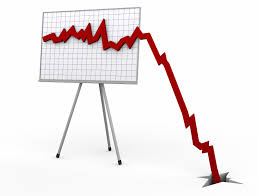
It’s never happened previously….oil prices went into negative territory on Monday and sellers were paying buyers to take it off their hands. Observers called it jaw-dropping as prices for West Texas Intermediate crude actually hit minus $40.32 a barrel.
Blame it on the coronavirus pandemic which left the U.S. economy at a standstill and so much oil going unused that there’s no place to store it. How serious of a problem is it? The price on the futures contract due in a month finished at $20.43 a barrel which represents the largest ever gap between the two. It also meant the price of oil fell 193% for the day.
“The May crude oil contract is going out not with a whimper, but a primal scream,” said Daniel Yergin, a Pulitzer Prize-winning oil historian and vice chairman of IHS Markit Ltd.
“There is little to prevent the physical market from the further acute downside path over the near term,” said Michael Tran, managing director of global energy strategy at RBC Capital Markets. “Refiners are rejecting barrels at a historic pace and with U.S. storage levels sprinting to the brim, market forces will inflict further pain until either we hit rock bottom, or COVID clears, whichever comes first, but it looks like the former.”
Traders capitulated in the face of limited access to storage capacity across the US, including the country’s main delivery point of Cushing, Oklahoma. The collapse will be a blow to US president Donald Trump, who has gone to great lengths to protect the oil sector, including backing moves by OPEC and Russia to cut production and pledging support for the industry.
The shale sector has transformed the US into the world’s largest oil producer in the last decade, giving Trump a foreign policy tool he has brandished as “US Energy Dominance”, but which now faces a rapid decline. Negative prices are the latest indication of the depth of the crisis hitting the oil sector after lockdowns imposed in many of the world’s major economies have sent crude demand tumbling by as much as a third, leaving the industry facing what Jefferies analyst Jason Gammel called “the bleakest oil macro outlook” he had ever seen.
Not all oil contracts are trading in negative territory. Brent, the international benchmark, lost 9 per cent on Monday to fall to $25 a barrel, but is less immediately afflicted by storage issues.
Brent is a seaborne crude allowing traders to easily ship it to areas of higher demand. Amrita Sen at Energy Aspects said: “With Brent you can put it on ships and move it around the world immediately. Storage tanks at Cushing, however, will be full in May.” WTI contracts for delivery in June lost 16 per cent but held above $20 a barrel, though traders warned it could face further losses. Both benchmarks traded above $65 a barrel as recently as January.
Stephen Schork, editor of oil-market newsletter The Schork Report, said he expected access to storage capacity in the US to be exhausted within two weeks — and cautioned that the collapse of the country’s oil consumption was accelerating. “It just gets uglier from here,” Schork said, adding that sharply rising unemployment numbers meant fewer and fewer Americans would be driving, hurting petrol demand even during its peak summer months.
“This summer is dead on arrival. The biggest demand months are not going to happen,” he said. Too much oil, with nowhere to put it.
The deepening fall in oil prices has come despite an Opec-backed deal to cut roughly 10 per cent of global crude supply. Reductions of varying magnitude are planned to run until April 2022 as part of efforts to stabilize prices.
Baker Hughes data on Friday showed that the number of active oil rigs in the US has dropped by more than a third over the past month. But signs of curtailed US supply have done little to boost prices.
Source: Economic Times





